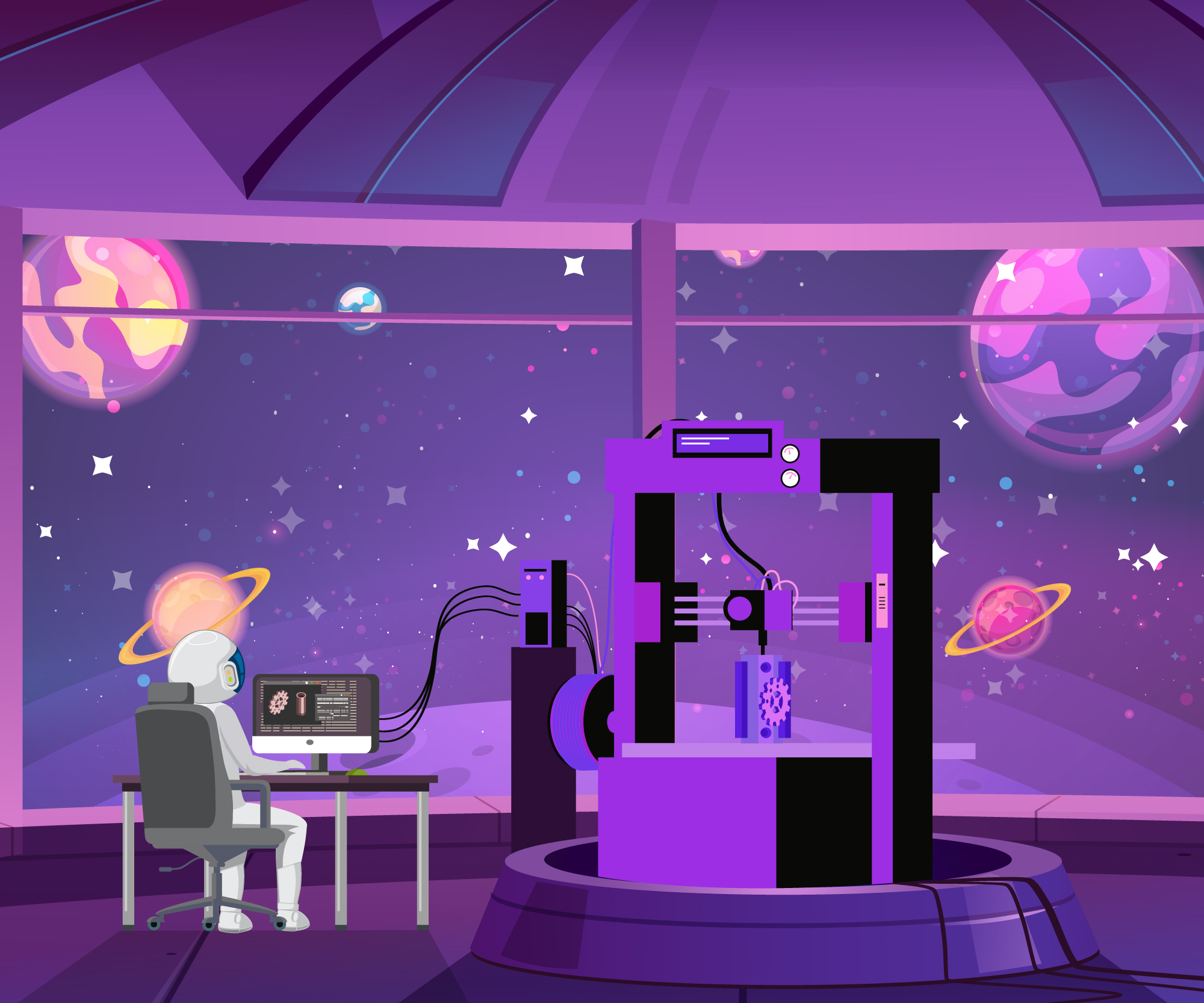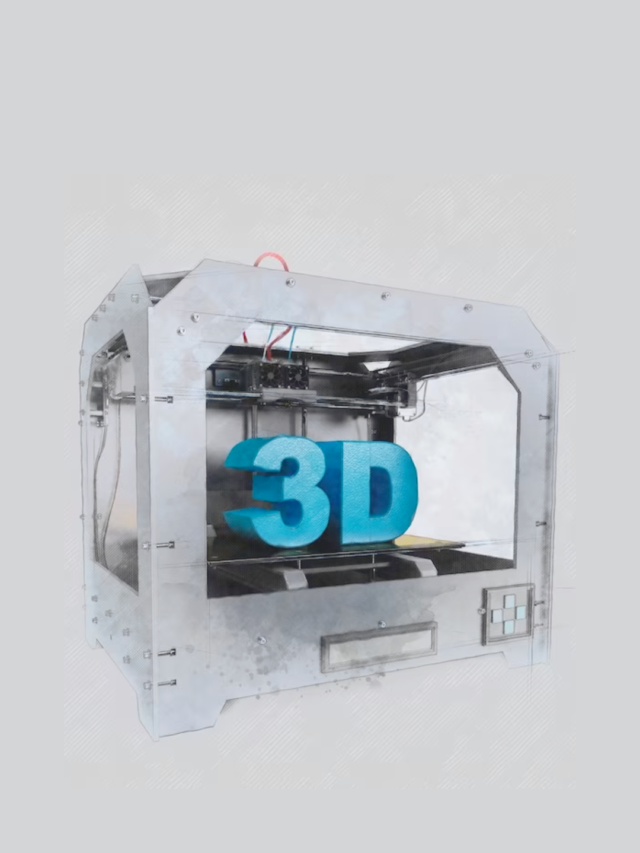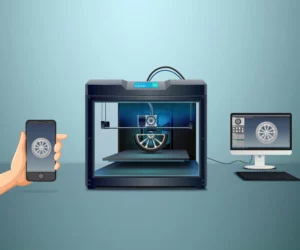
3D printing is changing how we manufacture objects—tools, toys, clothing, and even body parts. 3D printing or additive manufacturing creates objects by adding layer upon layer of a particular material. With this technology’s help, we can now produce complex parts for planes, machines, and cars, saving considerable manufacturing costs and production time. You can use different materials like plastics, metals, food, or even living cells. Engineers are using 3D printers to make objects of the jet engine that are lighter and stronger, making aeroplanes more efficient. Obviously, these are not the same at-home 3D printers you would use to craft little trinkets. This article will explore the relevance of 3D printing in space technology.
3D printing in space
3D printing is now commonly used in advanced fields like medicine, biotech, nanotech, and engineering. But now, this technology is also picking up steam in the space industry. The idea is simple: everything we’ve ever used in space has come from the earth’s surface. But what if everything that you needed in space was made there? The unique thing about manufacturing in space is that: we can take gravity out of the equation. The weightless environment helps make stronger and more efficient products than those made on earth.
Why is 3D printing in space valuable for missions?
For more than 20 years, the International Space Station has been home to astronauts. The space station provides astronauts with the facilities necessary for conducting scientific research. And to make the research possible on an extensive level, the station receives around 7,000 pounds of spare parts annually. Apart from the sheer quantity of the materials, there is also unsolicited pressure on the logistics support system. Therefore, having the technology to make spare parts makes the space mission more efficient. That’s where 3D printing technology comes into play. It establishes a framework for in-space manufacturing. Astronauts have used 3D printing to create tools and components that they need to complete their mission. These include everything from replacement parts for their spacecraft to devices for conducting experiments in space. Furthermore, 3D printing could create food and other essential supplies for sustaining astronauts during long missions.
Applications of 3D printing in space
(1) Satellite manufacturing
The use of 3D printing in space concerning satellites has increased significantly. Companies like Airbus and Boeing have been using 3D printing for manufacturing complex satellite and aircraft components. Boeing, for instance, is using 3D printing to accelerate its production of global SATCOM satellites for the US Space Force. Australia-based Fleet Space also joined the race and announced that they will be launching 3D-printed satellites.
(2) 3D-printed rocket engines
To speed up the manufacturing process of rocket engines, many companies are turning to 3D printing. Spanish startup Pangea Aerospace, for instance, is developing advanced 3D-printed combustion devices and rocket engines that are more efficient than the ones produced traditionally. The space sector giant NASA has also worked on lunar landers equipped with 3D-printed rocket engine parts to reduce manufacturing costs.
(3) 3D-printed clothes and food
Besides machines, rocket engines, and satellites, it is possible to create clothes and food for astronauts on long voyages using 3D printing. For example, Elon Musk-owned SpaceX has created 3D-printed space suits and helmets to meet the requirements of space missions. These suits have various features like touchscreen-compatible gloves and inbuilt microphones in helmets.
Furthermore, creating food for long space missions is challenging for people involved in additive manufacturing. You have to maintain freshness while preserving the nutrient density of the food item. Israel-based Aleph Farms is one such company providing self-sustaining food systems for astronauts who travel in space for long periods.
It all began with Made in Space
You can’t talk about 3D printing without mentioning Made in Space. Made in Space is a US-based manufacturing company which created the first 3D printer (Zero-G-Printer) used in space manufacturing in cooperation with NASA. However, it was a challenge when this company started making 3D printers function in a weightless environment. So Made in Space went to NASA and pitched their idea: if we could fly some 3D printers on a zero-gravity aeroplane, and if they work, they should be in space. Building a gravity-independent 3D-printing technology was a real breakthrough for Made in Space. And that’s how this revolution started.
Undeniably, 3D printing technology is indispensable. It has drastically reduced manufacturing costs, increasing the number of space missions. The future of 3D printing in space is fascinating. With new technological advancements, we can create more complex components and tools for specific purposes.



